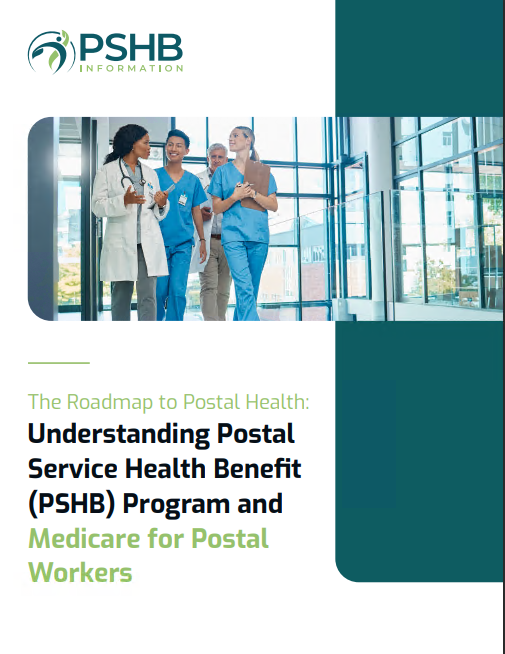Key Takeaways
-
Understanding when PSHB deductibles apply can help you anticipate and manage your healthcare expenses throughout the year.
-
Budgeting for deductibles ensures you are financially prepared for medical costs, making your health coverage work effectively for you.
What Are PSHB Deductibles?
When you enroll in a Postal Service Health Benefits (PSHB) plan, you’ll encounter the term “deductible.” This is the amount you pay out of pocket for healthcare services before your insurance plan starts covering its share. Deductibles vary depending on your chosen plan and whether services are in-network or out-of-network.
For 2025, PSHB plans include both low-deductible and high-deductible options. Low-deductible plans typically range between $350 and $500 for in-network services, while high-deductible plans range from $1,500 to $2,000. Out-of-network deductibles are higher, often between $1,000 and $3,000. Understanding these thresholds is crucial to optimizing your healthcare spending.
When Do Deductibles Apply?
Deductibles apply to most medical services, but there are exceptions. For example:
-
Covered Services: Deductibles usually apply to hospital stays, diagnostic tests, and specialist visits.
-
Preventive Care: Many PSHB plans waive deductibles for preventive services like annual check-ups, immunizations, and cancer screenings.
-
Prescription Drugs: Depending on the plan, prescription costs may fall under a separate deductible or copayment structure.
If you’re unsure about which services are subject to deductibles, your plan’s Summary of Benefits is a great place to start. You can also reach out to your plan’s customer service for clarification.
Breaking Down the Costs: In-Network vs. Out-of-Network
One of the most significant factors affecting your deductible is whether you use in-network or out-of-network providers. Staying in-network is generally more cost-effective because these providers have pre-negotiated rates with your PSHB plan.
-
In-Network Services: Lower deductibles and reduced coinsurance rates.
-
Out-of-Network Services: Higher deductibles and coinsurance rates, often doubling or even tripling your out-of-pocket costs.
By choosing in-network providers, you can minimize your financial burden and maximize the benefits of your PSHB coverage.
Planning for the Year: How to Budget for Deductibles
To manage your deductibles effectively, it’s essential to create a healthcare budget. Here’s how:
1. Estimate Your Annual Healthcare Needs
Think about your typical healthcare usage. Do you visit specialists regularly? Do you anticipate needing diagnostic tests or elective procedures? Answering these questions can help you predict how much of your deductible you’re likely to use.
2. Set Aside Funds
Consider setting up a health savings account (HSA) or flexible spending account (FSA) to cover deductible costs. For 2025, the maximum FSA contribution is $3,300, and HSA limits are $4,300 for individuals and $8,550 for families. These accounts offer tax advantages, making them a smart way to prepare for healthcare expenses.
3. Track Your Spending
Keep a record of your medical expenses throughout the year. Many PSHB plans provide online portals or mobile apps where you can monitor your deductible progress. This helps ensure you’re aware of your remaining deductible balance.
4. Prepare for Unexpected Costs
Healthcare needs can arise unexpectedly. Building an emergency fund specifically for medical expenses can provide peace of mind.
Timing Is Everything: Benefit Periods and Deductibles
PSHB deductibles reset annually, meaning you start over on January 1 each year. This reset applies to all covered members of your plan, including family members. If you’re enrolled in a family plan, you’ll typically encounter both individual and family deductibles.
-
Individual Deductibles: Each covered person must meet their deductible before the plan begins paying for their services.
-
Family Deductibles: Once the total expenses for all family members reach the family deductible, the plan starts covering everyone’s services, even if an individual hasn’t met their own deductible.
Understanding this structure can help you time non-urgent medical services. For instance, scheduling elective procedures early in the year can help you meet your deductible sooner, reducing costs for the remainder of the year.
Leveraging Preventive Care
Preventive care is often exempt from deductibles, which means you can access these services without worrying about out-of-pocket costs. Utilizing preventive care not only helps you stay healthy but can also reduce long-term healthcare expenses by identifying issues early.
Some common preventive services include:
-
Annual physical exams
-
Blood pressure and cholesterol screenings
-
Immunizations
-
Cancer screenings, such as mammograms and colonoscopies
Make sure to schedule these appointments early in the year to maximize your benefits.
Managing High-Deductible Plans
High-deductible health plans (HDHPs) can be intimidating, but they also offer unique advantages. For example, these plans often pair with HSAs, allowing you to save pre-tax dollars for healthcare expenses.
To make an HDHP work for you:
-
Fully Fund Your HSA: Contribute the maximum amount to take full advantage of tax savings.
-
Plan Your Healthcare Spending: Use your HSA funds to pay for eligible expenses, reducing your out-of-pocket costs.
-
Monitor Your Expenses: Keep track of your healthcare spending to ensure you’re staying within your budget.
By strategically using an HDHP and HSA, you can take control of your healthcare expenses and potentially save money over time.
Key Strategies to Reduce Out-of-Pocket Costs
Reducing out-of-pocket costs while meeting your deductible is possible with careful planning. Here are some tips:
-
Use In-Network Providers: As mentioned earlier, staying in-network can significantly lower your costs.
-
Compare Prices: Costs for the same service can vary between providers. Use your plan’s tools or contact providers directly to compare prices.
-
Ask About Generic Medications: If you’re prescribed medication, ask your doctor if a generic version is available. Generic drugs are often significantly cheaper than brand-name equivalents.
-
Take Advantage of Telehealth: Many PSHB plans offer telehealth services, which are typically less expensive than in-person visits.
Common Misconceptions About Deductibles
Deductibles can be confusing, leading to misconceptions that may affect how you use your health plan. Let’s clear up some common myths:
-
Myth 1: I Can’t Use My Insurance Until I Meet the Deductible. Many services, such as preventive care and some prescription drugs, are covered before you meet your deductible.
-
Myth 2: The Deductible Is the Only Cost I Pay. In addition to the deductible, you’ll likely pay coinsurance or copayments for services.
-
Myth 3: All Plans Have the Same Deductible. Deductibles vary widely between plans and even between individual and family coverage options.
Understanding these nuances ensures you make the most of your PSHB plan.
Wrapping Up: Budgeting for Health and Peace of Mind
Planning and budgeting for PSHB deductibles doesn’t have to be overwhelming. By understanding when deductibles apply, staying in-network, leveraging preventive care, and using tax-advantaged accounts like HSAs and FSAs, you can take control of your healthcare costs. Make sure to review your plan’s benefits each year and stay proactive about your healthcare needs.








